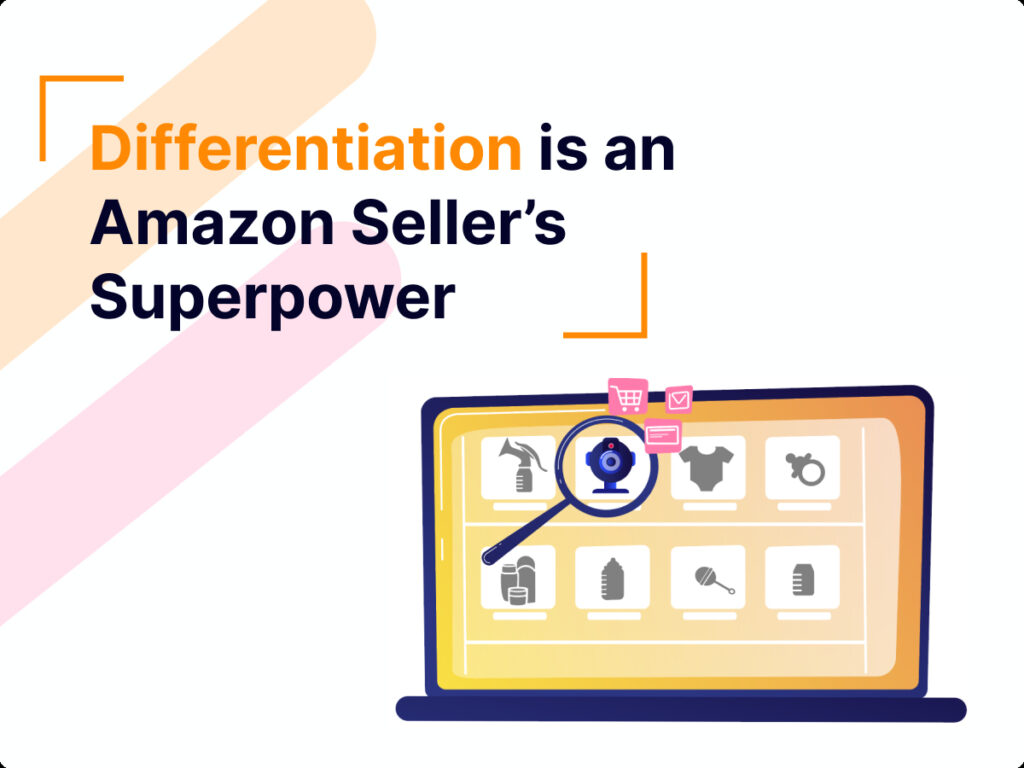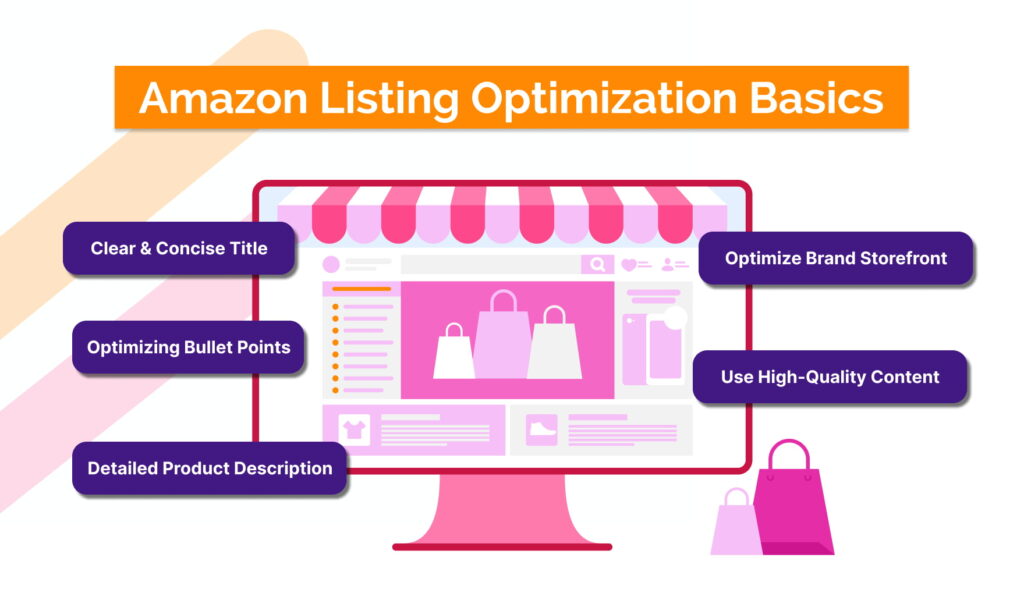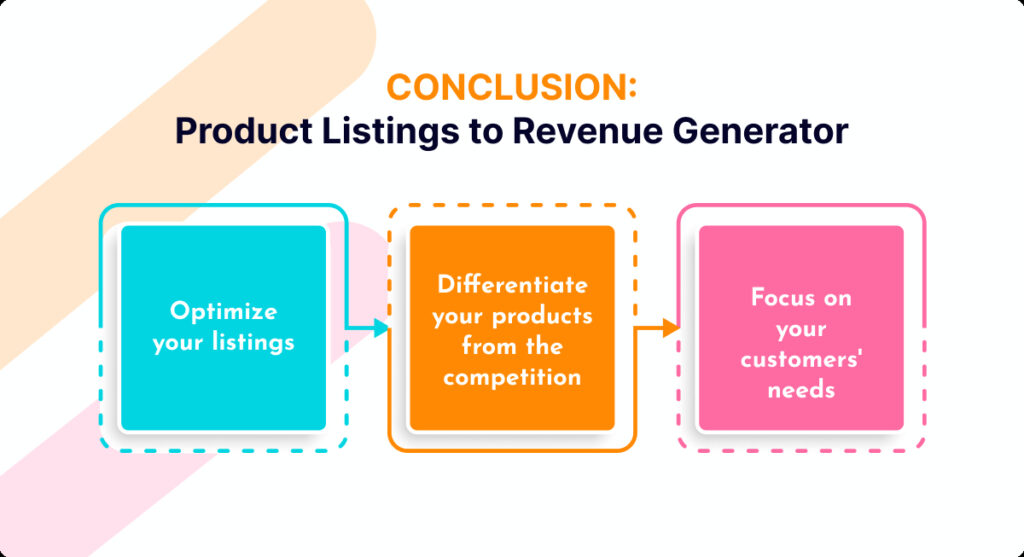
As an Amazon seller, your ultimate goal is to transform your product listings into a cash flow machine that consistently brings in revenue year-round.
In order to actually transform your Amazon listings into cash-flow machines…
There are Key Strategies that can be implemented to guarantee your success.
Let’s dive into the following tips and strategies that will help you transform your Amazon product listing into a reliable revenue generator.

With thousands of products available on Amazon, it’s crucial to differentiate your product from the competition.
One way to accomplish this is by creating a unique selling proposition (USP).
Your USP should focus on the benefits and value that your product provides to customers.
It’s essential to understand your target audience and what they are looking for in a product.
By crafting a compelling USP, you’ll be able to set your products apart from your competitors and attract more customers.
Another way to differentiate your product is by improving the packaging or adding additional features that your competitors don’t offer.
By adding these extra touches, customers will perceive your product as being of higher quality and value.

When it comes to selling on Amazon, keyword research is the foundation of a successful product listing
It is essential to research and identify keywords that are relevant to your product and your target audience.
By doing so, you can optimize your listing and ensure that it appears in search results when potential customers are looking for products like yours.

When it comes to selling on Amazon, understanding your buyer’s pain points is essential.
A pain point is a specific problem or issue that your potential customer is facing.
It could be anything from a lack of time to a need for convenience or a desire for a particular product feature.
As a seller, you need to identify your buyer’s pain points and offer solutions that address these issues.
By doing so, you can create a product listing that resonates with your target audience and increases your chances of making a sale.

One way to identify your buyer’s pain points is to conduct market research.
This could involve analyzing customer feedback on Amazon or conducting surveys to gather information about your target audience’s needs and preferences.
Once you have identified your buyer’s pain points, it’s time to provide solutions.
Your product listing should highlight how your product can solve your customer’s problem and make their life easier.
For example, if your target audience is busy parents, you could emphasize how your product saves time or simplifies a particular task.
You also need to communicate the value of your product effectively.
This means highlighting the benefits of your product and explaining why it’s better than the competition.
You can do this by using persuasive language and providing evidence to support your claims.
Another way to address your buyer’s pain points is to create a loyalty program.
By offering incentives for repeat customers and positive reviews, you can encourage brand loyalty and generate revenue over time.
This could involve offering discounts, free shipping, or other perks that make your customers feel valued and appreciated.
In conclusion, identifying and solving your buyer’s pain points is essential for success on Amazon.
By understanding your target audience’s needs and preferences, you can create a product listing that resonates with them and increases your chances of making a sale.
So, take the time to conduct market research, provide solutions, and communicate the value of your product effectively.
With these strategies in place, you can build a loyal customer base and grow your business over time.

Amazon’s search algorithm prioritizes products that are optimized in the right way.
A well-optimized Amazon product listing includes:
Additionally, a good product listing includes competitive pricing and positive customer reviews.
When it comes to creating a clear and concise product title, it’s important to keep in mind that customers are looking for specific keywords that describe the product they want.
This means that you should include relevant keywords in your product title that accurately describe what your product is and what it does.
For example, if you’re selling a yoga mat, your product title should include keywords such as “non-slip,” “extra thick,” and “durable” to attract customers who are looking for those specific features in a yoga mat.
Optimized bullet points are another important aspect of a well-optimized Amazon product listing.
These bullet points should highlight the key features and benefits of your product in a clear and concise manner.
Use bullet points to break up your product information into easy-to-read sections and make sure to include any important details that customers may be looking for, like:
A detailed product description is also crucial to a well-optimized Amazon product listing.
This is your opportunity to really sell your product and convince customers that it’s the right choice for them.
Make sure to include any relevant information about the product’s uses, benefits, and unique features.
High-quality product images are another important aspect of a well-optimized Amazon product listing.
Use high-resolution images that showcase your product from multiple angles and highlight its key features.
Make sure that your product images are clear and well-lit, and that they accurately represent your product.
Don’t just focus on the optimization of your products; it’s important to optimize your brand’s storefront as well.
Your Amazon storefront should be visually appealing, easy to navigate, and contain customer-friendly information.
By establishing a strong brand identity, you can maintain long-term customer loyalty and increase sales in the long run.
When optimizing your storefront, make sure to use high-quality images that showcase your brand’s products and values.
Use clear and concise language to describe your brand and its mission, and make sure to include any relevant information about your company’s history and values.
By following these Amazon listing optimization basics, you can create a well-optimized product listing and storefront that will attract customers and increase sales.

The influx of competition has made it more challenging for established sellers to maintain their market position.
However, by staying informed about new trends and changes, you can adapt your strategy to stay ahead of the game.
One way to keep up with the competition is to conduct research on your competitors.
By analyzing their strategies, you can identify areas where they are effectively engaging with customers and establish a plan to stay ahead of the competition.
For instance, you can study their:

Transforming your Amazon product listing into a reliable revenue generator requires a strategic approach.
By implementing the above-listed tips, you can:
All of which can help transform your product listing into a year-round cash flow machine.